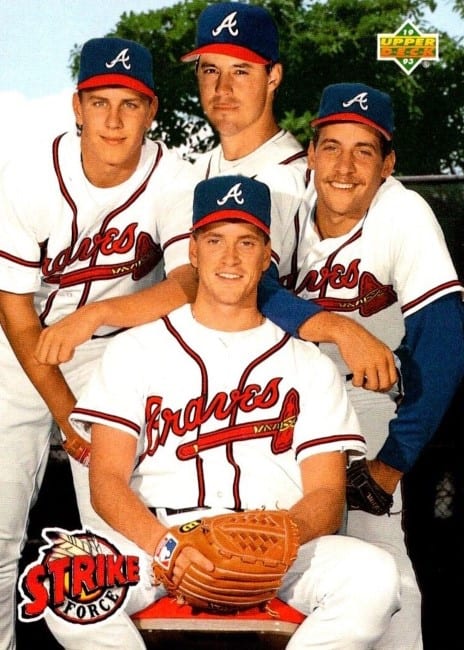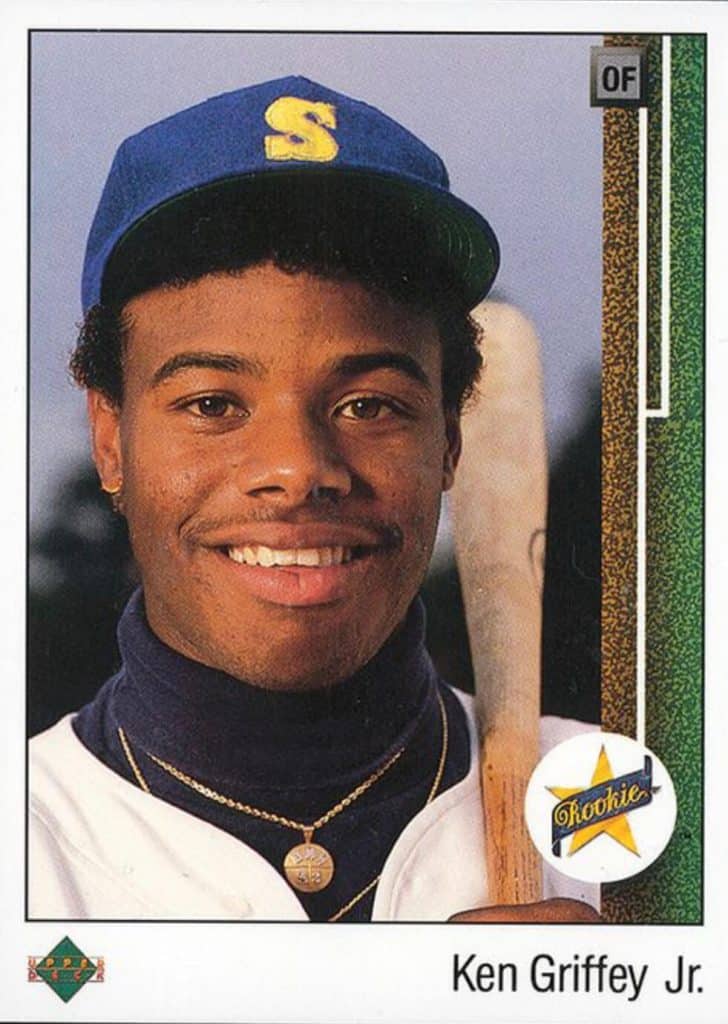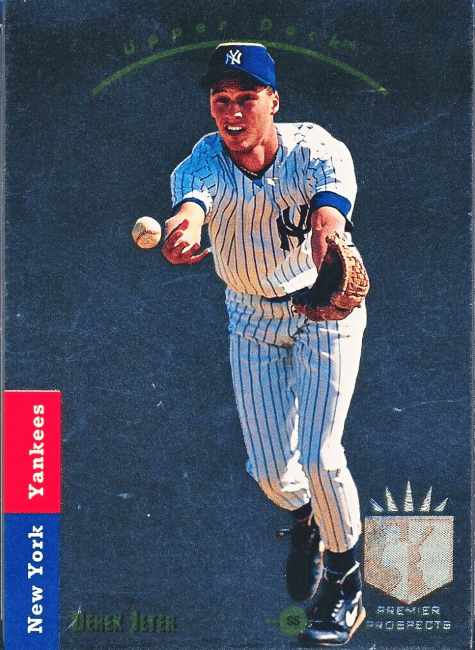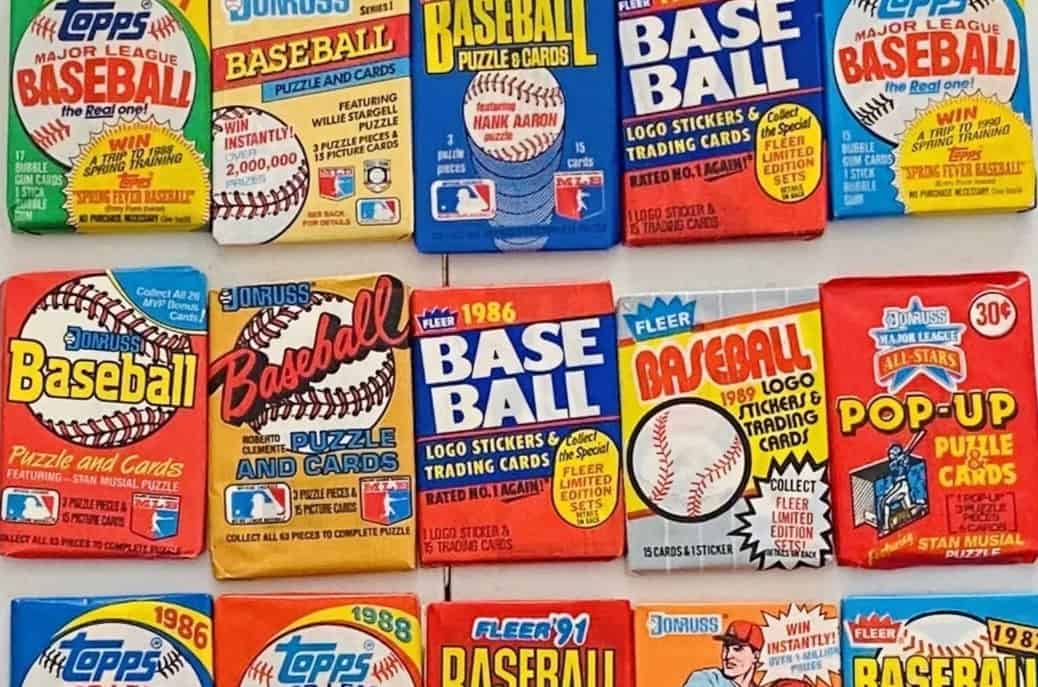For many baseball card collectors, the late 1980s and early 1990s evoke a specific feeling: disappointment. This period, derisively nicknamed the “junk wax era,” is remembered for its overproduction of cards and plummeting values. But was it truly a wasteland of worthless cardboard, or is there more to the story? Let’s delve into the wax packs, explore collector sentiment, and uncover some hidden gems from this often-derided era.
The Junk Wax Era Starts (1986-1994)

First, the name: The “Junk wax” name comes from the wax-paper packs that held most cards of the era (and also, it should be known, contained sticks of gum) and the “junk” is a reference to the worthlessness of the cards. More broadly, it simply refers to worthless or low value cards of that time period.
In the 1980s, the popularity of baseball was higher than ever, and collectors who had grown up with the sport were now old enough to buy up their favorite baseball cards from the past and present. This led to a bubble in baseball card collecting, that culminated in the bubble bursting with the junk wax era.
The junk wax era, roughly spanning 1986 to 1994, witnessed an unprecedented explosion in card production. Companies like Topps, Donruss, and Fleer, fueled by skyrocketing demand, saturated the market with an avalanche of cards. Base sets ballooned in size, reaching over 700 cards in some years. Subsets, parallels, and inserts proliferated, further diluting the market.
Ultimately, the junk wax era led to a crash in baseball card values, with many collectors – banking on the ever-increasing popularity of baseball cards – left holding 1,000s of near-worthless baseball cards. In particular, for young collectors who invested their hard-earned allowance in wax packs, the bubble burst quickly. The perceived value of their collections plummeted, leaving them disillusioned. Many abandoned the hobby altogether, their basements filled with forgotten cardboard dreams.
What Caused the Junk Wax Era?
The junk wax era of baseball cards was a complex phenomenon with several contributing factors:
Increased Demand
- Baby Boomers with disposable income: The generation born between 1946 and 1964 entered their peak earning years during the late 1980s, fueling a surge in disposable income. This demographic, having grown up collecting cards themselves, saw them as a potential investment and fueled the initial market boom.
- Baseball’s popularity: Baseball enjoyed immense popularity in the late 1980s and early 1990s, with stars like Roger Clemens, Barry Bonds, and Ken Griffey Jr. captivating fans. This popularity further stoked the demand for cards.
- Investment frenzy: Card collecting entered the mainstream, fueled by stories of cards skyrocketing in value. Media coverage and investment guides hyped the potential for substantial returns, attracting new collectors who viewed cards solely as investments.
Oversupply

- Card companies’ greed: Fueled by the seemingly insatiable demand, card companies aggressively increased production. New sets, parallels, and inserts bombarded the market, often with minimal differences between them. This overproduction far outpaced actual demand.
- Competition: With Topps, Donruss, Fleer, and Upper Deck vying for market share, each company tried to outdo the others with larger sets and flashier designs. This further exacerbated the overproduction problem.
Market Saturation and Collapse
- Oversupply met diminishing demand: As production skyrocketed, demand eventually reached its limit. New collectors, disappointed by the abundance of common cards and realizing the investment bubble was unsustainable, left the hobby.
- The 1994 baseball strike: The strike further dampened enthusiasm for the hobby and cards, creating a double whammy for the already saturated market.
Ultimately, the junk wax era was a confluence of factors: increased demand fueled by nostalgia and investment hopes, coupled with overproduction driven by card companies’ greed and competition. When the bubble burst, it left many collectors disillusioned and the market flooded with undervalued cards.
Shifting Perspectives on the Junk Wax Era
Time has softened the blow for some collectors. The junk wax era now evokes a sense of nostalgia, reminding them of simpler times and the joy of collecting their favorite players. Additionally, the sheer volume of cards produced has created a treasure hunt for discerning collectors. Certain cards, despite the overproduction, have defied the “junk wax” label and attained significant value due to:
Junk Wax Rookies

While base cards from this era may be common, rookie cards of future Hall of Famers like Ken Griffey Jr. (1989 Upper Deck), Chipper Jones (1992 Topps), and Derek Jeter (1993 Upper Deck SP) still command high prices. These cards capture the early promise of legends, making them cherished possessions for fans and investors alike.
Junk Wax Errors & Variations
Amidst the sea of common cards, rare printing errors, parallels, and inserts can be worth a fortune. The 1989 Upper Deck set not only produced the famous Griffey rookie, but a reverse-image error card of Dale Murphy. Similarly, rare error cards like the “no name on front” Frank Thomas rookie in the 1990 Topps set can fetch hefty sums.
Sentimental Junk Wax Cards
Ultimately, the value of a junk wax era card often transcends market prices. For many collectors, these cards represent a specific time in their lives, filled with memories of childhood, collecting among friends, and the excitement of chasing their favorite players. A seemingly ordinary card from 1991 might hold immense sentimental value for someone who remembers the anticipation of pulling it from a pack.
Conclusion: Beyond the Stereotype
The junk wax era may not be remembered fondly by all collectors, but it’s more than just a period of overproduction and disappointment. It’s a reminder of the cyclical nature of the hobby, the enduring power of nostalgia, and the potential for hidden gems within even the most common-looking cards.
So, the next time you encounter a box of dusty junk wax cards, remember, amidst the wax and cardboard, there might be a Griffey rookie, a printing error gem, or simply a memory waiting to be rekindled. The true value, after all, often lies in the eye of the collector.
